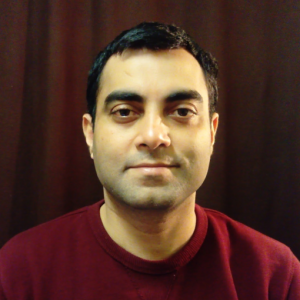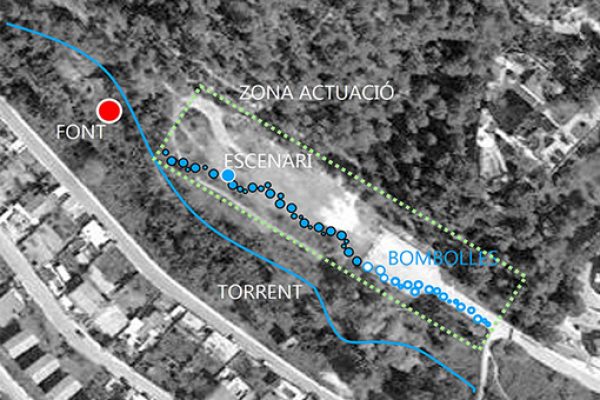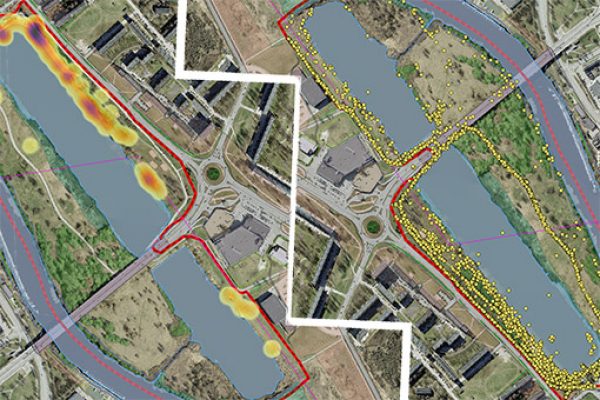BlueHealth topic is on the rise
BlueHealth has been investigating how Europe’s health and wellbeing is connected to blue spaces for nearly four years.
In that time, we’ve collaborated with a range of international specialists and with sister projects like the Seas, Oceans and Public Health in Europe project, and the topic of ‘BlueHealth’ is noticeably on the rise.
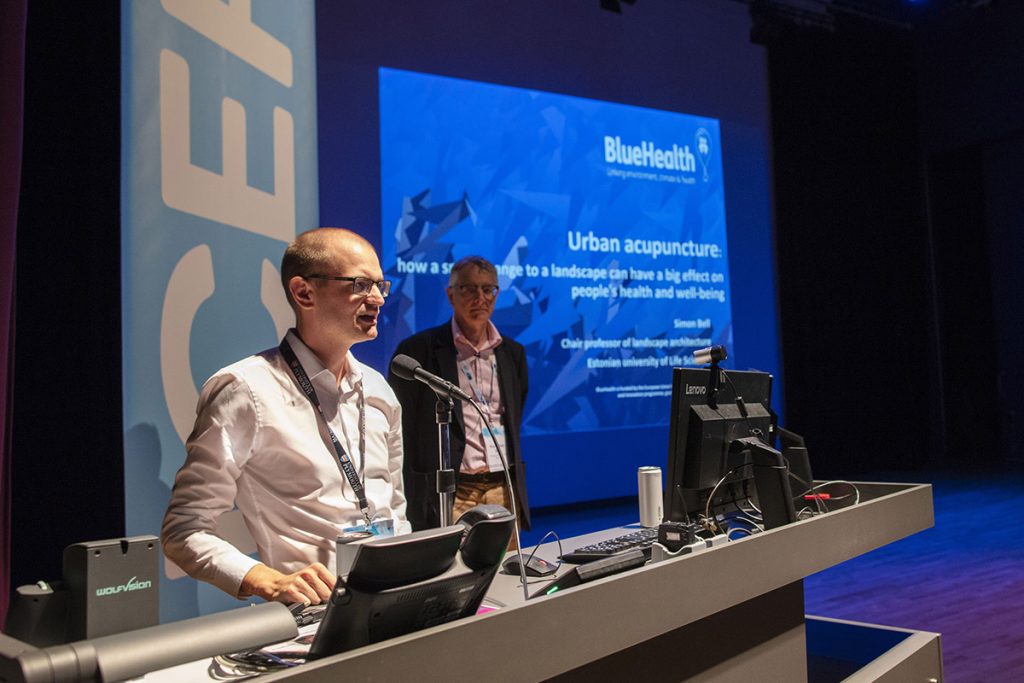
BlueHealth presentation by Lewis Elliott (left) and Simon Bell (right).
BlueHealth’s contribution to sustainable development
Suitably hosted in Plymouth, the UK’s Ocean City, the recent International Conference on Environmental Psychology (ICEP) brought together 350 environmental and psychology experts to discuss how science can protect people and the planet.
Around 20 researchers presented topics linked to BlueHealth, contributing to a wide spectrum of conversations related to the impact urban and natural waterways have on health and wellbeing.
The conference demonstrated the crucial role of environmental research which incorporates the human dimension and discussed how best to encourage policy makers to prepare for the future. Following the recent United Nations’ Sustainable Development Report and with the sustainable development goals in mind, these were timely conversations.
BlueHealth in discussion
Three symposiums dedicated presentations to BlueHealth, amongst additional presentations into data analysis, wellbeing improvements and examples of BlueHealth interventions across Europe. Additional topics included:
- An overview of interdisciplinary “blue” wellbeing services in Finland;
- The relationship between water management and marine citizenship;
- How VR can provide nature-based experiences for those with limited access;
- An overview of the BlueHealth Behavioural Assessment Tools (BBAT).
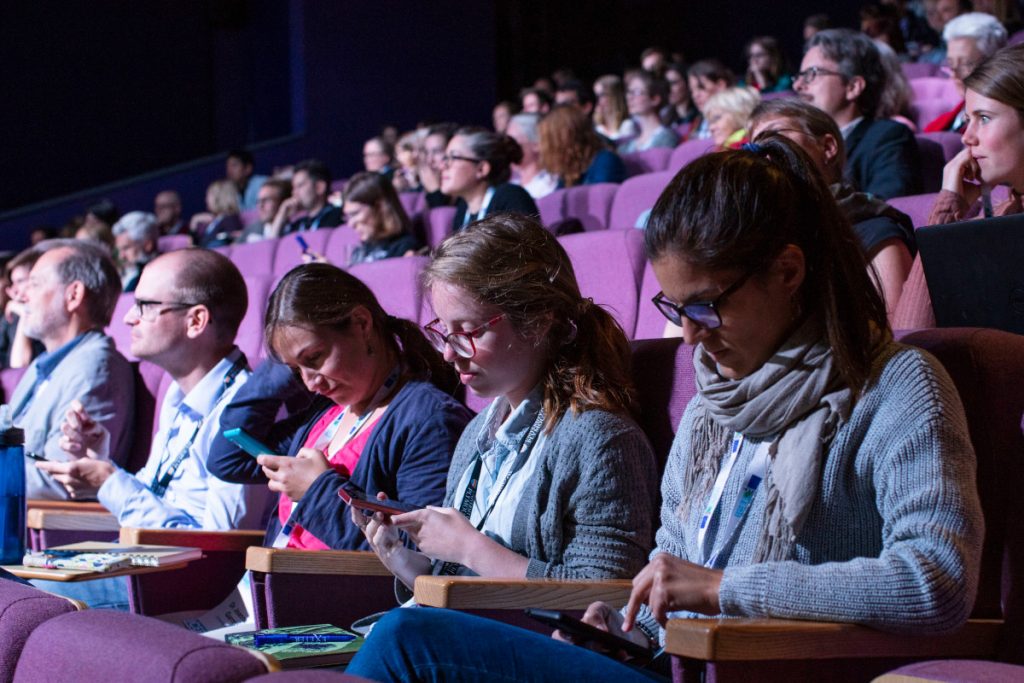
Blue health audience members contribute ‘live’ to the discussion using the Mentimeter.
Designing blue spaces fit for the future
Himansu Mishra, Urban Planner and Landscape Architect, is completing his PhD in collaboration with the BlueHealth project. Usually based at the Estonian University of Life Sciences, he attended the UK conference to present the BlueHealth Behavioural Assessment Tool. Himansu said:
“It’s great to hear the phrase ‘blue health’ being used more widely by the research community and increasingly in our conversations with urban planners, architects, environmental psychologists and public health professionals. By developing tools such as the BBAT, we can help urban planners and landscape architects assess a location’s affordances for physical activities and relaxation and its potential impact on human health outcomes and activities. This may promote an evidence-based design approach and help create healthy blue places for our communities.”
BlueHealth includes a community of more than 80 researchers from across Europe. Read more about their areas of expertise on our people page.


